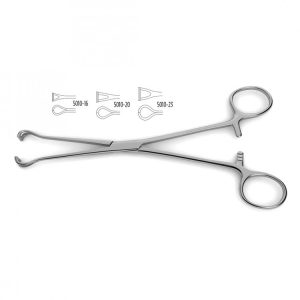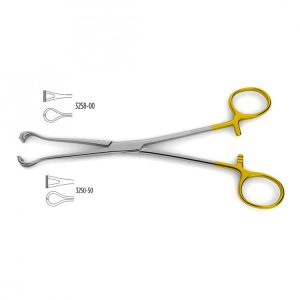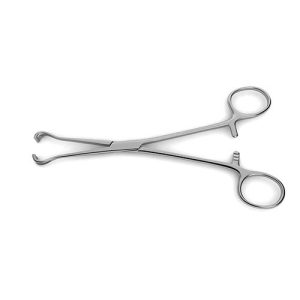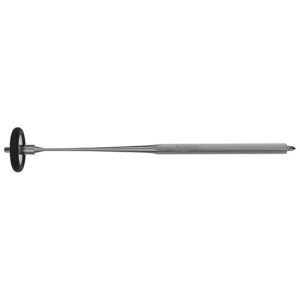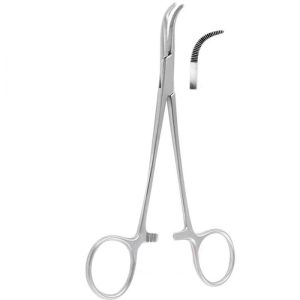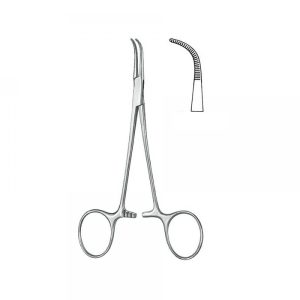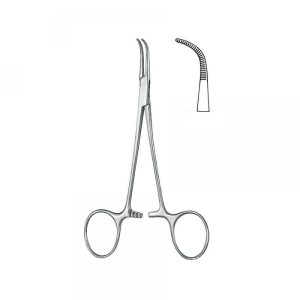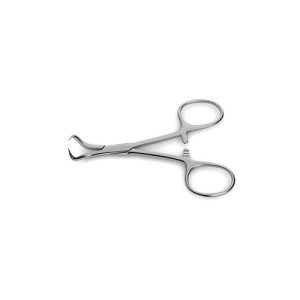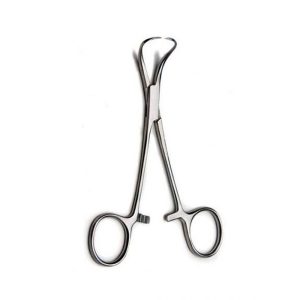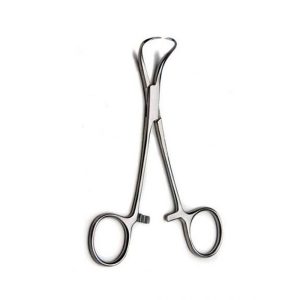Babcock Tissue Forceps
Babcock Tissue Forceps
standard pattern.
Babcock Tissue Forceps come in a standard pattern with semicircular rounded tips to allow for holding or grasping delicate body structures. These forceps are crafted from premium German operating-room grade stainless steel and are available in a wide variety of lengths.
Babcock Tissue Forceps – Tungsten Carbide
Tungsten carbide jaws
Babcock Tissue Forceps have jaws that are made from tungsten carbide, the hardest metal made for surgical instruments. Precision-milled serrations are formed onto the tungsten carbide inserts, resulting in pyramid-shaped teeth that provide a non-slip grip. Pyramid-shaped teeth align perfectly with each other to provide a durable and reliable grasp of the most delicate or toughest tissues, as well as needles, sutures, dressing materials and delicate vessels. Smooth tungsten carbide inserts are also available for delicate procedures. Spring tension allows for surgeons to maintain proper and consistent position, ensuring optimal grip without having to apply excess force. These forceps also feature gold-plated handles.
Babcock-Baby Tissue Forceps
Babcock-Baby Tissue Forceps
extra-delicate jaws.
Babcock-Baby Tissue Forceps contain extra-delicate jaws that can be used to grasp delicate tissues or structures like the ovaries. The forceps generally have smaller jaw width and shorter overall length than the standard pattern. The shorter length may provide better control or ability to work closer to the body.
Babinski Percussion Hammer
Babinski Percussion Hammer
9" (23.0 cm)
Babinski Percussion Hammer is ideally used in diagnostic evaluation of reflex responses. This uniquely designed hammer has a crown shaped head that is rimmed with rubber to allow greater comfort. This instrument features an elongated neck that flares for added grip and tapers back into a fine point for use as a aesthesiometer to test tactile reflexes.
Backhaus (Ball & Socket) Towel Clamp
Backhaus (Ball & Socket) Towel Clamp
5-1/8" (13.0 cm
Backhaus (Ball and Socket) Towel Clamp has the primary use of securing drapes to the surgical site to prevent any changes in their position during an operation. The ball and socket on the tips of the inwardly curved jaws help to secure the drapes while minimizing the penetration and damage. To use this clamp, it is positioned to the desired place and then closed using the ring-handles. The ratchet allows this instrument to stay secure until it is released.
Backhaus Towel Clamp
Backhaus Towel Clamp
Backhaus Towel Clamp is mainly used to fasten drapes or towels to patients during medical procedures in order for them to stay on. The pointed tips of the jaws cave inward so that they enter both the skin and drape. This clamp is designed with ring-handles and ratchet fixation to allow the clamp to remain in place until it is released.

